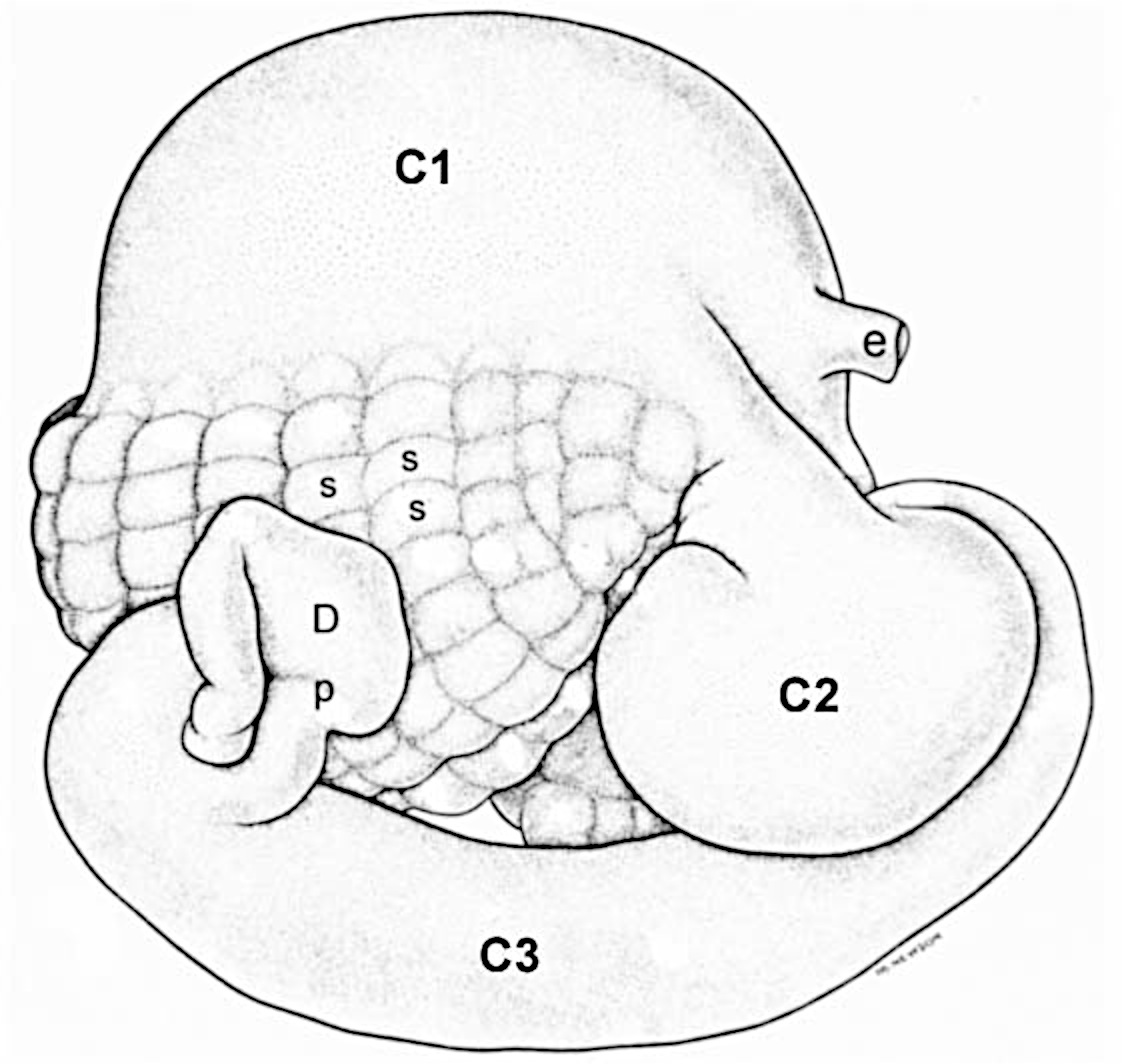Part 4: Camelid Abdominal Viscera
Abby Brown
Self-Study of Camelid Abdominal Viscera
Camelid Stomach and Spiral Colon (DRY & WET, if available)
- Study the available camelid stomach specimens.
- Identify the three compartments of the camelid stomach: first compartment (C1), second compartment (C2) and third compartment (C3). (Figure 5-19)
- Observe the interior of the stomach through the “window” and look for internal sacculations (cavities with glands); externally, note any corresponding ‘bumps’ on the surface.
- C1 and C2 have obvious internal sacculations/cells; C1 also has obvious external ‘bumps’ representing the areas of sacculation.
- C3 is non-sacculated, but this long, tubular compartment does have microscopic mucin glands (in the initial 4/5 of C3) and proper gastric glands (in the distal 1/5 of C3); the latter glands are similar to what is found in the abomasum of the ruminant stomach.
- In C1, identify the ventricular lip (that extends into C2) and the transverse fold.
- In C1, there is a ventricular groove with a single ventricular lip, extending from the region of the esophagus toward C2.
-
- Comparative Note: Recall in the ruminant that there is a similar structure called the reticular groove on the medial wall of the reticulum, but it has two lips rather than one.
-
- Note the transverse fold that divides C1 into cranial and caudal parts.
- Note the absence of papillae in C1.
- In C1, there is a ventricular groove with a single ventricular lip, extending from the region of the esophagus toward C2.
- C3 then leads into the duodenum.
-
- Note the initial enlargement of the duodenum which is known as the duodenal ampulla.
- Study the available spiral colon specimens.
-
- Note that the camelid ascending colon is coiled into a spiral colon, similar to that of ruminants, but it lacks proximal and distal loops before and after the spiral portion.

Figure 5-19. (Left) Llama stomach, right side. e, esophagus; C1, C2, C3, stomach compartments; s, glandular saccules of C1; p, pylorus; D, duodenal ampulla.
Dissection Videos for this Section of Material
Camelid
- Dried Stomach: https://youtu.be/1515UjFW6Ks

